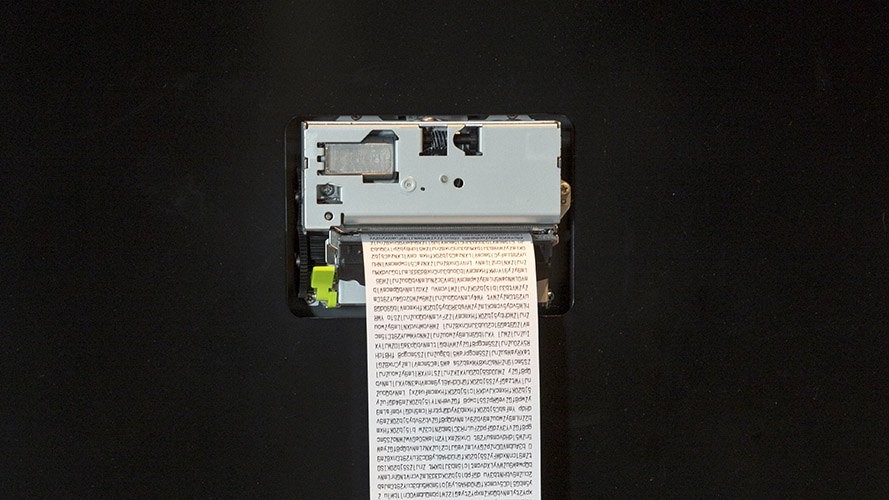*1984 in Xi’an, CN, lives and works in Shanghai, CN
GFWlist
2010, installation, Corian, thermal printer
The Great Wall of China, on which building started as early as in the seventh century BCE, was intended as an over eight thousand kilometers-long border fortification to protect the Chinese states and empire against the incursions by nomadic peoples from the north. In the age of global networking, today the Great Firewall of China stands for the attempt to keep harmful information, ideas, images, and videos out of the Chinese Internet. This constantly updated method of censorship, described by the Communist Party of the People’s Republic as Harmony, concerns thousands of websites from abroad, and just as many from within China itself. Important news, political activities on the Internet, blogs, unpopular opinions, and so on, are blocked by the Great Firewall, and cannot be accessed on the Internet in China in the normal way.
With his installation GFWlist, the artist, blogger, and free thinker Xu Wenkai, aka aaajiao, makes public the URLs of the websites that are banned and blocked on the Chinese Internet. They appear as a continuous list on a printed paper strip, which unwinds endlessly out of a printer in the center of a tall stele. Because it is even prohibited to publish a list of these web-addresses in China, aaajiao sends a clear message of civil disobedience with this installation.
The mysterious black monolith is famous from its appearance in Stanley Kubrick’s movie A Space Odyssey of 1968. At the beginning of the film, it suddenly appears from nowhere at a waterhole in the desert where groups of prehistoric humans are fighting over the last water reserves. Like a higher intelligence from outer space, the monolith leads to a change of awareness in the early humans. While playing with animal bones, they discover them as the first weapons, and they use them to crack the skulls of their rivals at the waterhole. In Kubrick’s movie this marks the beginning of the development of technology and civilization.
(Bernhard Serexhe)
Courtesy ZKM | Center for Art and Media Karlsruhe

aaajiao
1984, Ksiana, CN, dzīvo un strādā Šanhajā, CN
GFWlist
2010, instalācija, Corian, termālais printeris
Lielais Ķīnas mūris, kura celtniecība sākās jau septītajā gadsimtā p.m.ē., bija iecerēts kā vairāk nekā astoņus tūkstošus kilometru garš robežnocietinājums, lai aizsargātu Ķīnas valstis un impēriju pret klejotāju tautu iebrukumiem no ziemeļiem. Globālā tīmekļa laikmetā šodien Lielais Ķīnas ugunsmūris pastāv, lai nodrošinātu, ka kaitīga informācija, idejas, attēli un video nenokļūst Ķīnas internetā. Šī pastāvīgi atjauninātā cenzūras metode, ko Tautas Republikas Komunistiskā partija nosaukusi par “Saskaņu”, attiecas uz tūkstošiem ārzemju vietņu, un tikpat daudzām pašā Ķīnā. Svarīgas ziņas, politiskās aktivitātes internetā, blogi, nepopulāri viedokļi un tā tālāk tiek bloķēti ar Lielā ugunsmūra palīdzību, un šim interneta saturam Ķīnā nevar piekļūt normālā veidā.
Ar instalāciju GFWlist mākslinieks, blogeris un brīvdomātājs Ksu Venkai, pazīstams arī kā aaajiao, publisko Ķīnas internetā aizliegto un bloķēto vietņu adreses. Noslēpumainais melnais monolīts ir slavens ar savu klātesamību Stenlija Kubrika filmā “Kosmosa odiseja” 1968. gadā, kurā tas iezīmē tehnoloģiju un civilizācijas attīstības sākumu.
Bernhards Serekse
Sadarbībā ar ZKM | Mediju mākslas centru Karlrūē